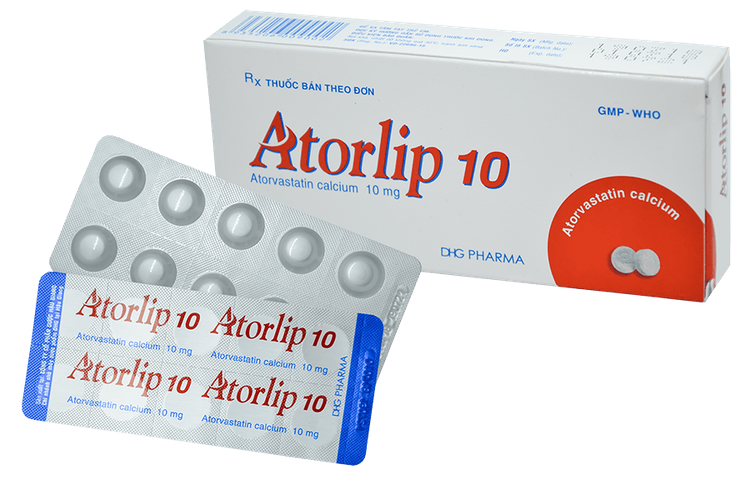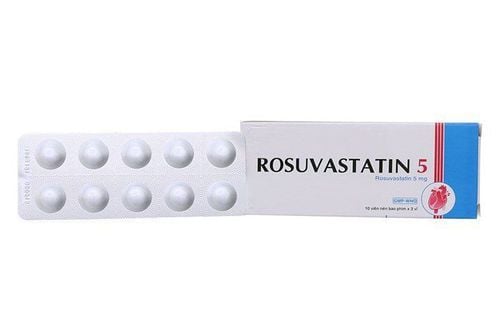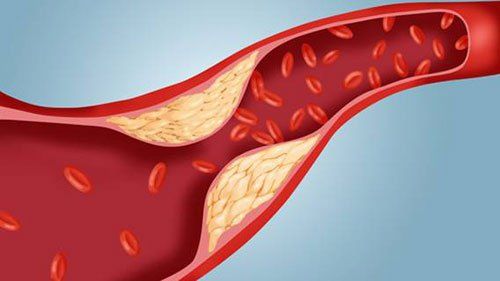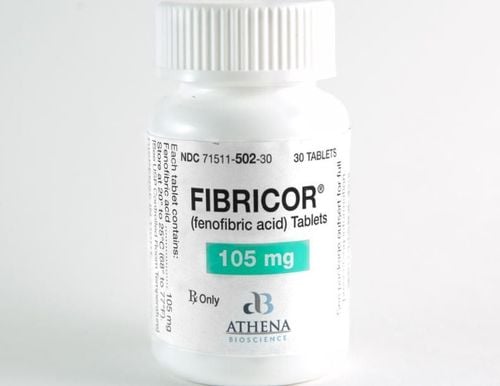This is an automatically translated article.
Dyslipidemia is a relatively common disease today with many health risks. Therefore, drugs to control blood lipids such as Atorlip 10mg or 20mg are very important in supporting the treatment of the disease.
1. What is Atorlip 10mg?
Atorlip contains the active ingredient Atorvastatin in 10mg and 20mg strengths. Atorlip is a synthetic lipid-lowering drug with the active ingredient atorvastatin calcium that competitively inhibits 3-hydroxy-3-methylglutaryl Coenzyme A (HMG-CoA) reductase. Thereby inhibiting the conversion of HMG-CoA to mevalonate, a precursor of cholesterol. Besides, Atorlip 10mg and Atorlip 20mg also help reduce plasma lipoprotein and cholesterol levels through the ability to inhibit synthesis in the liver as well as increase the number of LDL receptors (a type of low-density lipoprotein).
Atorvastatin has the strongest LDL cholesterol lowering effect (range 25 to 61%) of any other active ingredient when used alone, thus offering very good prospects for patients who need to reduce cholesterol significantly. instead of using a combination of drugs. Another effect of Atorvastatin is to improve the concentration of HDL cholesterol (a high-density lipoprotein and is considered good cholesterol) by 5 - 15%, thereby lowering the ratio of LDL/HDL and total cholesterol/HDL. Atorlip can lower plasma triglyceride levels by 10-30% by stimulating the clearance of residual VLDL (very low density lipoprotein) by LDL receptors.
Clinical studies to date show that statins, including atorvastatin, are associated with a marked reduction in cardiovascular events and a marked reduction in mortality in patients with coronary artery disease.
Atorlip 10 mg drug is rapidly absorbed after oral administration, reaching maximum blood concentrations within 1-2 hours. It is noteworthy that the extent of absorption and concentration of Atorvastatin is directly proportional to the dose used, that is, the higher the dose taken, the greater the absorption and blood concentration of the drug.
Besides, food can affect the rate and extent of drug absorption, but overall the treatment effect remains unchanged. Another feature of Atorlip is that the blood level of Atorvastatin can change depending on the time of day when it is taken. After taking the drug in the evening, plasma concentrations of Atorvastatin were lower than in the morning, but the therapeutic effect remained the same.
2. Indications and contraindications of Atorlip 10
Drug Atorlip 10 is indicated for treatment in the following cases:
Increased total cholesterol, LDL-cholesterol and blood triglycerides; Helps slow the progression of coronary atherosclerotic plaques; Prevention of coronary events in hypercholesterolemic individuals, including reducing the risk of acute myocardial infarction or performing coronary revascularization procedures and the risk of cardiovascular death. Atorlip 10mg should not be used in the following contraindications:
Hypersensitivity or allergy to Atorvastatin; Progressive liver disease, persistent elevation of liver enzymes and greater than 3 times the upper limit of normal; Pregnant and lactating women.

Thuốc Atorlip 10mg cần được sử dụng theo chỉ định của bác sĩ
3. Some issues to be careful when using Atorlip
Before initiating treatment with any statin drug (including Atorlip), the patient should determine the cause of the hypercholesterolemia and test the blood lipid level to determine the therapeutic dose. After that, it is necessary to conduct periodic blood lipid measurement (no less than 4 weeks interval), from which to adjust the drug dosage according to the response level of the patient.
Atorlip 10 mg should be used with caution in subjects who drink a lot of alcohol or have a history of liver disease. It is also necessary to test liver function before treatment and periodically during drug use.
Statin therapy can lead to side effects of myositis and rhabdomyolysis, so dose reduction or discontinuation of the drug should be considered if the patient develops signs and symptoms suggestive of myositis (eg, muscle weakness, elevated creatine phosphokinase). more than 10 times the upper limit of normal) or have high risk factors for developing renal failure secondary to paroxysmal myoglobinuria.
4. Some drug interactions
When using Atorlip with the following drugs, there may be interactions:
Cyclosporin, Gemfibrozil, Erythromycin, Itraconazole, Ketoconazole, Niacin when used concurrently with A torlip will increase the risk of myositis or risk of resorption. cloud; Atorvastatin enhances the effect of the vitamin K antagonist Warfarin; Antacids, Cholestyramine may reduce plasma concentrations of Atorvastatin.
5. Undesirable effects of the drug Atorlip 10
The side effects of Atorlip are usually mild and transient, including:
Constipation, diarrhea; Flatulence, indigestion; Stomachache; Headache ; Nausea, vomiting; Muscle pain; Fatigue, insomnia. Inform the doctor about the unwanted side effects that occur during the use of the drug to have the appropriate intervention direction.

Người bệnh có thể gặp một số tác dụng phụ khi dùng thuốc Atorlip 10mg
6. Dosage and how to use Atorlip
Patients need to build and maintain a reasonable diet before treatment with Atorlip. This drug to treat blood lipids can be taken at any time of the day and regardless of meals with the following dosage:
Initial dose: 10 - 20 mg, once a day; Some patients who need a significant reduction in LDL cholesterol levels (more than 45%) can start with a dose of 40 mg once daily; Therapeutic dose: 10 - 80 mg, once a day, and can be adjusted according to the test results of blood lipids. Pregnant women are in the group of absolute contraindications to Atorlip 10mg or 20mg. Safety in this population has not been established because of the lack of controlled clinical studies. In addition, reports of birth defects encountered after exposure to HMG-CoA Reductase inhibitors (such as Atorlip) have not been reported. Animal studies have shown Atorlip toxicity to fertility. Maternal treatment with Atorvastatin reduces fetal levels of Mevalonate (a precursor for cholesterol synthesis).
Atherosclerosis is a chronic process and discontinuation of lipid-control agents during pregnancy has little impact on the long-term risk of hypercholesterolemia. Therefore, Atorlip should not be used in women who are planning or are pregnant.
For lactating women, it has not been established whether Atorvastatin and its metabolites are excreted in human milk. In rats, plasma concentrations of Atorvastatin and its active metabolite were comparable to those in milk. Because of the risk of serious side effects, women who are breastfeeding should absolutely not take Atorvastatin.
Please dial HOTLINE for more information or register for an appointment HERE. Download MyVinmec app to make appointments faster and to manage your bookings easily.













